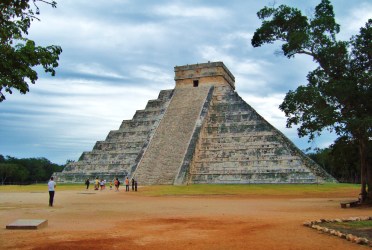
Chichen Itza Mayan Ruins
Chichen Itza is certainly the number one tourist attraction (besides going to the beach here). Bus loads of people flow from Cancun and Playa Del Carmen daily to this Mayan site. More than 1.2 million tourists visit Chichen Itza every year. Why is this so?
Well a lot has to do with the semi restored extensive ruins at this site. There are many ruins that are just mere hills covered in jungle. How many people want to see that? Once you see one you have seen them all. At sites like Ek Balam and Coba you can see these “hills” that are really unrestored temples in addition to the restored pyramids. Today Chichen Itza has been restored and preserved as much as possible and the once wealthy city with a culturally advanced civilization can be experienced by walking around.
See our top tips to visiting Chichen Itza Maya ruins here in our video
Tours to Chichen Itza
Do you want to go on a tour to see this marvel of the world? We have teamed up with a tor provider that offers good prices to see these ruins.
Click here to check prices for tours and what is included.
What is there to see at Chichen Itza?
The main attraction and most identifiable is “El Castillo” or the castle which is 90 ft. tall. It has staircases on each side with 365 steps representing the number of days in a year. This pyramid was used for religious and astronomical observation purposes. It is also called the Temple of Kukulkan, after the feathered serpent god. Mesoamerican cultures periodically built larger pyramids atop older ones, and the Temple of Kukulkan is one such example. In the mid 1930s, the Mexican government sponsored an excavation into the pyramid. They discovered a staircase under the north side of the pyramid. By digging from the top, they found another temple buried below the current one. Inside the temple chamber was a Chac Mool statue (The Chac-Mool depicts a human figure in a position of reclining with the head up and turned to one side, holding a tray over the stomach. The meaning of the position or the statue itself remains unknown) and a throne in the shape of jaguar, painted red with spots made of inlaid jade. After installing a set of bars and a locked gate to protect the jaguar figure they allowed tourists to come and view it, but in 2006 the tunnel leading to the temple chamber was closed to all but archaeologists.
Tip: A visit to Chichen Itza on the vernal and autumnal equinoxes will give you a fascinating view of the phenomenon between the sun’s light and the edges of the stepped terraces on the pyramid. This very brief shadow display will be on the sides of the northern stairway a serrated line of seven interlocking triangles that gives the impression of a long tail leading downward to the stone head of the serpent Kukulkan, at the base of the stairway. This makes the body of the snake visible.
The Observatory at Chichen Itza is called El Caracol (or snail in Spanish) because it has an interior staircase that spirals upward like a snail’s shell. The first structure was probably built during the period of the late 9th century and consisted of a large rectangular platform with a stairway. A round tower of about 48 feet high was built on the platform, with a solid lower body, and an observation chamber on the top. The round, concentrically vaulted Caracol was built and rebuilt several times during its time of use in order to calibrate its astronomical observation capacity. The windows in the Caracol point in the cardinal and sub cardinal directions and are believed to enable the tracking of the movement of Venus, the sun and the moon and other celestial objects.
Chichen Itza is also famous for its Great Ball Court with stone rings 20 feet high upon two its walls. Each of the northern, southern and eastern sides supports temples, which were probably used for rituals on the days when the sacred games were played. There are sloping benches on the sides of the court, and they were probably used to help keep the ball in play. They are carved with reliefs of the victory celebrations. One of the scenes, the beheading of a player in center field witnessed by the players of both teams, is one of the most dramatic examples of Maya art. The scene not only illustrates the danger faced by the players but also the sacred importance of the game.
Other notable buildings and structures at Chichen Itza is the Temple of the Warriors, also known as the Temple of the Thousand Columns. There is also a traditional Mayan house recreation to give you an idea of what the area once looked like. These houses were made of wood, clay and thatch roofs, so every trace of them has been erased with time.
Interesting Fact: Mayan houses were oval shape and hurricane resistant.
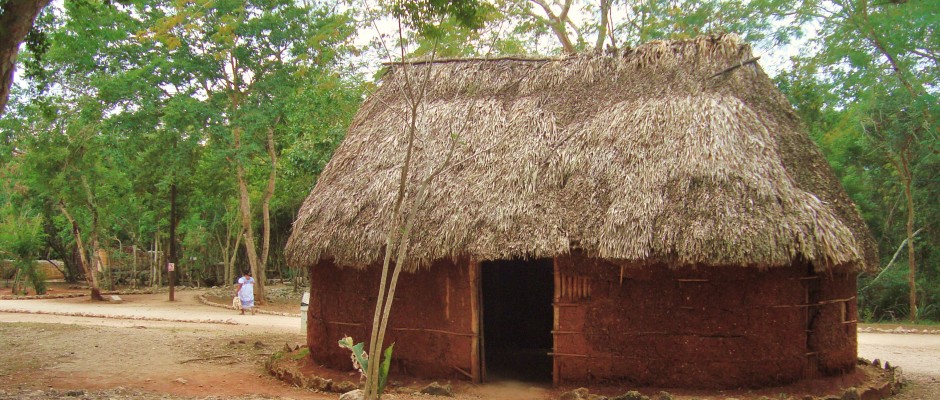
On one side of the Chichen Itza is one of the two cenotes The larger cenote is called “Cenote Sagrado” or Sacred Cenote. According to sources the pre-Columbian Maya threw sacrificial objects and human beings into the cenote as a form of worship to Chaac, the Maya rain god. When archaeologists dredged the cenote in 1961 and 1967, they found various types of offerings, including jade carvings, pottery, gold and silver artifacts and even human skeletons. The cenote was also considered by the Maya to be an entrance to the underworld, and it is believed that the sacrificial victims were venerating Chac Mool by entering this underworld. Could these human sacrifices have been the downfall of the city? Did the water source become polluted? We don’t know for sure, but it is important to be logical between mixing religion and your drinking water.
Besides having so much to offer as far as restored buildings, Chichen Itza was named one of the New Seven Wonders of the World in 2007. This gave a high amount of publicity to the site. The government of Mexico knew this would have a major effect on tourist for the Yucatan and promoted the voting to elevate Chichen Itza to the new status. This has added thousands of jobs to people in the area.
Today Chichen Itza is a UNESCO World Heritage Site and is the second most visited of Mexico’s archaeological sites. You can no longer climb the pyramid in Chichen Itza, but you can at Ek Balam and Coba. Most people arrange a tour to come and see the site. It is a full day trip since it is about 1hr 40 min. -2 hr 40 mins. depending on the route the bus takes from Cancun and Playa Del Carmen. Most tours take in a beautiful cenote called “Sacred Blue Cenote” in Ik Kil and may stop in the colonial city of Valladolid. Tours usually allow a full two hours at Chichen Itza because it does involve walking a lot and of course shopping for souvenirs.
What to bring on tour to Chichen Itza
- Bring bottled water with you. You can purchase food and water there, but it is tourist prices.
- Bring sun protection with you and that might include an umbrella for the large walking area at Chichen Itza. If you are planning on swimming in the cenote, make sure you have biodegradable sunscreen. The chemicals in regular sunscreen damage the fragile eco system and pollute the water which gets in your eyes.
- Comfortable loose clothes and comfortable walking shoes will be needed.
- And of course, your camera!
Have you been to Chichen Itza? Do you have some tips you want to share? Let us know in the comments below.


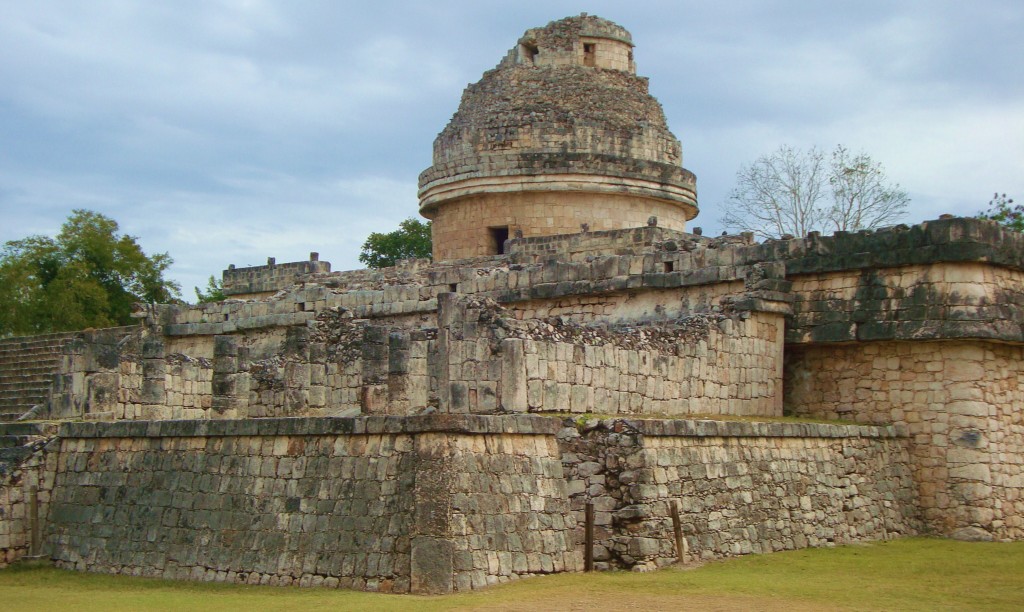
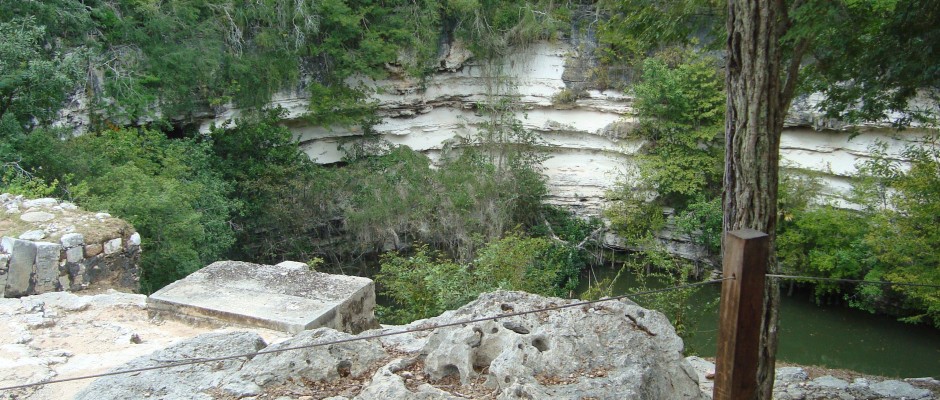
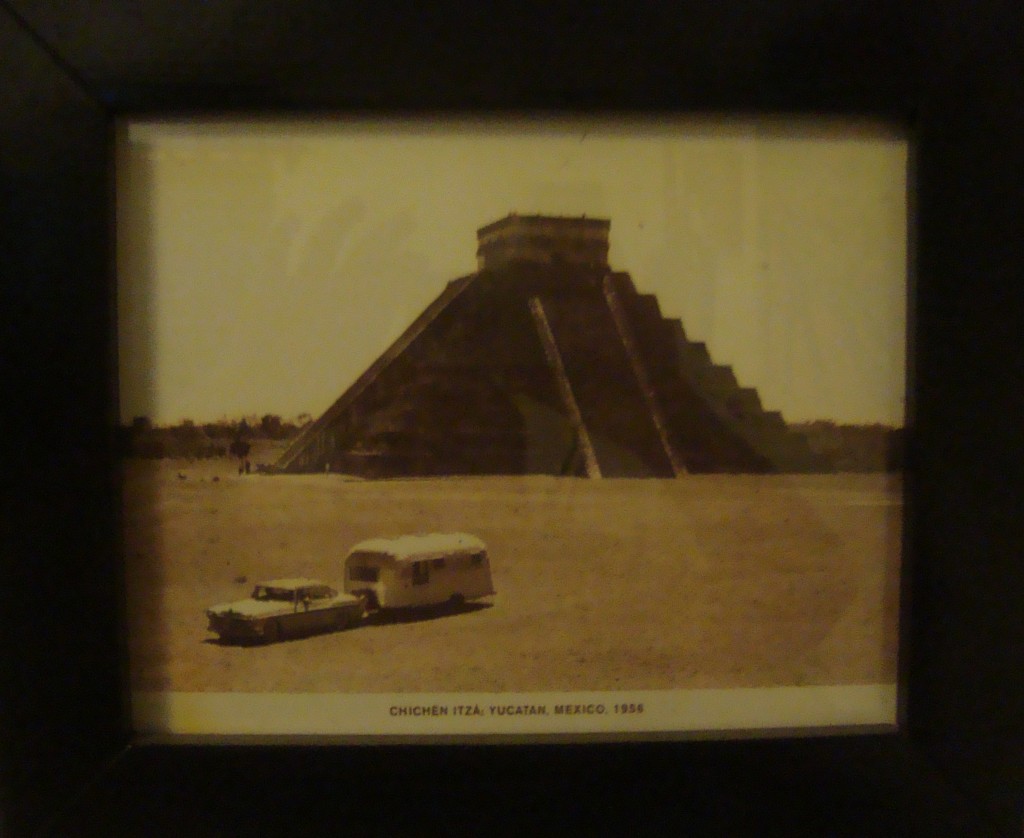
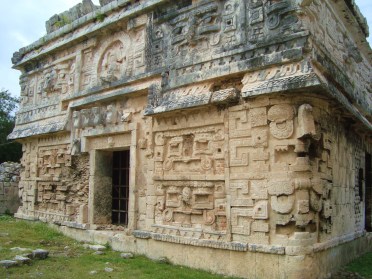
Hi,
Thanks for sharing about this amazing and beautiful place. We loved going to Chichen Itza! Marvelous ruins.
Thanks for the post. We are planning to drive there ourselves from Playa. Appreciate if you have any tips suggestions and what is the admission price as well as any activities to do along at chichen itza
Hello
We have this other guide for getting to Chichen Itza and it highlights some tips and cost for you. If you need anything else, feel free to ask.https://everythingplayadelcarmen.com/chichen-itza/
It was a fabulous place to visit I was only there for a couple of hours and would love to return one day
I would love to go here. It is a piece of history that has bin around hundreds of years. What makes it so special to me is at onetime long ago the ppl that lived here and walked here and built this with there own hands and now we can walk and touch and visit the same place
Update for February 2019. Just went there and paid $80MX to park, $481MX admission fees complete. It’s gone up a wee bit since my last visit. Yikes!
There are credit card machines that issue tickets. Walk past the line, look to your left at the official book store. two machines that look like ATMs will let you purchase with a card.
I am getting pretty disgusted with the commercialization of the site itself. There were vendors lining every pathway and road inside the park. How about moving them out of the park proper and clear an area just for them to annoy people?
The price did just go up. It was a surprise to a lot of tour companies that sold tickets already at the old price. At one point they moved all the merchants out front but they entered again to line the paths. Uxmal is a good site and has no one selling things inside. This is a good alternative to Chichen Itza.
I have a question…..I am going to Mexico in September on a cruise and have a choice to Chichen Itza, Coba or Tulum. Which one should I visit on this trip. I’m kind of leaning to Coba since I can climb to the top. Any advice would be great. Thanks…..
Hello and thank you for your question. We would suggest Coba also as the best option. Tulum will be the closest ruins to visit followed by Coba. Chichén Itzá it a six hour round trip plus ferry crossings, so it is a lot of transportation time. Coba is fun because it is deep in the jungle and offers a great view from climbing to the top.
Is there a Visitors Center at CHichen Itza with maybe a gift shop that sells quality souvenirs instead of the “almost free” and “Just $1” crap the harrassing outdoor vendors sell? I visited Chichen Itza in 2005 and bought a lovely silver bracelet, but can’t remember if it was from a street vendor or an indoor shop. I do remember an indoor museum, but 15 years ia a long time to remember everything.
There are probably more venders around the trails at the ruins now. There are shops at the entrance also.